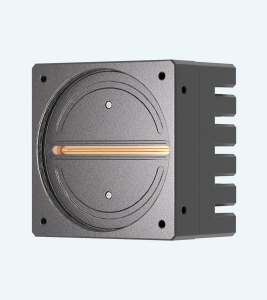The past several years have witnessed significant developments in industrial machine vision, with a number of trends shaping innovation throughout manufacturing applications. Artificial intelligence (AI) and deep learning algorithms are arguably one of the most prominent trends. Such systems can be applied not just to take images but also interpret them instantly for detecting flaws, classifying objects and even predicting maintenance requirements. Industrial machine vision solutions powered by AI are able to achieve defect detection rates that up to 30% higher than with the traditional rule-based systems.
A second trend is the transition to cameras with higher pixel count. Manufacturers are meshing out sensors with 20 or more megapixels so they can see down to the smallest detail on products. One of the industries that most requires high resolution vision systems is semiconductor production, largely due to its components in dimensions similar to few nanometers. Higher resolution lasers are essential, sometimes more than 100 frames per second for example with automotive production lines traveling over the speed of up to 200 meters a minute.
The other breakthrough is the incorporation of 3D imaging technology. With the 3D cameras, an adept version can easily measure or inspect objects in terms of depth and volume which are impossible for traditional 2 D systems. In aerospace and other industries where parts must fit together with micron precision, 3-D vision systems can be used to ensure that all components meet exact specifications (faster). The end result is a reduction in errors which improve safety. The leading companies in this field are Cognex and Keyence, both of which have made 3D technology available to many major manufacturers.
Lin said edge computing is becoming more widespread, which allows machines systems to handle information on site instead of via servers in the cloud. Real-time decision-making is crucial especially in rapid-paced manufacturing environments, enabling lower latency. Mathematically, especially when it comes on top of an already efficient operation — automation breeds efficiency set bells ringing. This is how edge computing speeds up machine vision, improving performance in general.

The price to install, and subsequently enjoy the numerous benefits of advanced machine vision systems continues to decline, making this technology more accessible than ever before for small- as well as medium-sized manufacturers. Machine Vision Market In 2023, and had been valued at $13.6 bn in the market analysis of Global Machine Vision with an expected CAGR means Compound Annual Growth Rate (CAGR) over next five years reach %8. Factors leading to the growth: Reduction in hardware cost and evolution of software-as-a-service (SaaS) model, where upfront installation costs are low.
Furthermore, trials in quality control and assembly processes using collaborative robots (cobots) are also revolutionizing with the use of machine vision cameras. Cobots safely partner with humans, boosting productivity without the requirement for a safety cage. Thus, vision-guided cobots are perfect for those first assembly stages because they can work with an accuracy of 0.01 millimeters; this level of delicacy is suitable to complete tasks in the electronics and medical device manufacturing industry sectors that require greater care when handling materials than traditional robots could achieve on their own due solely by being mobile hard automation systems.
How Machine Vision is Shaping Sustainability Shifts in machine vision are changing the way they're being employed and utilized. All energy-efficient cameras and processor are being developed so that power is reduced to the lowest level possible as it holds a special place for companies who wants too keep the carbon footprints minimum. One example is optimization of sorting and packaging in food processing — done by machine vision, this process decreases waste up to 15%.
In conclusion, key industrial machine vision trends give a new lease of life to the modern world such as AI & deep learning technologies increase in use cases along with High resolution and 3D imaging becoming more popular by utilizing Edge computing for better processing power within tiny chips.With cobots integration being one differentiator between the early players from existing come&sees. The technologies for this are getting better and cheaper, become an integral part of modern production systems.